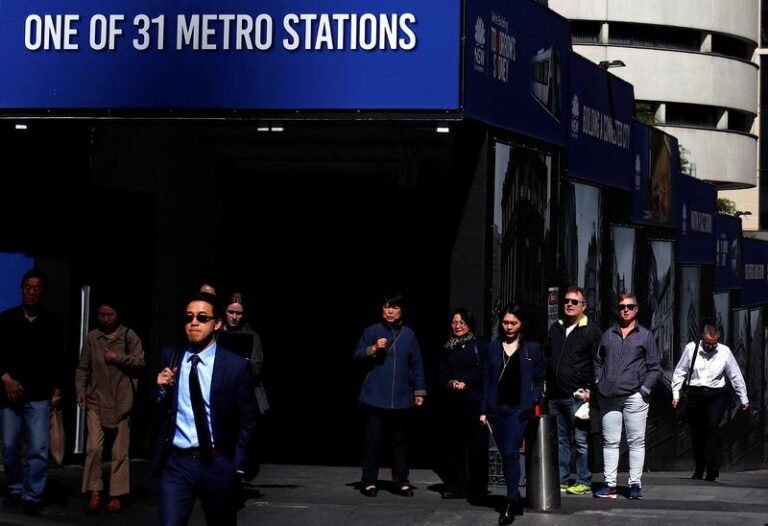
(Reuters) – Australia’s economy handily beat forecasts last quarter, rebounding from a coronavirus-induced contraction helped by massive stimulus, while growth is expected to be even stronger this quarter with near-zero new COVID cases.
The economy expanded by 3.3% in the three months to September, data from the Australian Bureau of Statistics (ABS) showed on Wednesday. Economists in a Reuters poll had forecast a 2.6% rise after a 7% contraction in second quarter.
Despite the brisk pace of quarterly growth, GDP still contracted 3.8% on an annual basis, suggesting the recession-stricken economy is not out of the woods yet and that policy support will be needed for some time.
The rebound was led by household spending, which rose 7.9%, the data showed.
But annual output is not expected to reach pre-COVID levels until late next year, provided Australia is able to keep the virus at bay.
The country, which has recorded nearly 28,000 coronavirus cases, has been lauded globally for successfully reopening its economy in late-May after curbing the pandemic.
That, together with A$300 billion ($221.55 billion)in fiscal stimulus and record low cash rate of 0.1%, have boosted jobs, credit demand, home prices and household consumption.
In a sign of solid consumer demand, Australia’s top lender Commonwealth Bank saw nationwide spending on its credit and debit cards jump 12% for the week-ending Nov.23 from last year.
ANZ Banking Group said spending on its cards surged 28% for the week to end-November, helped by Black Friday and Cyber Monday sales.
“Q4 growth is currently shaping up to be solid,” ANZ economists wrote in a note.
“The strong rebound in activity in Melbourne, the broader bounce in consumer and business confidence, along with upside surprises from the high frequency data are currently suggesting that December quarter growth will be pretty solid.”
Victoria state, of which Melbourne is the capital, reopened from its marathon lockdown in late October.






